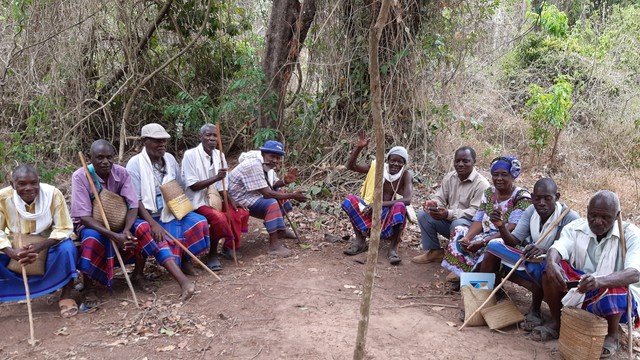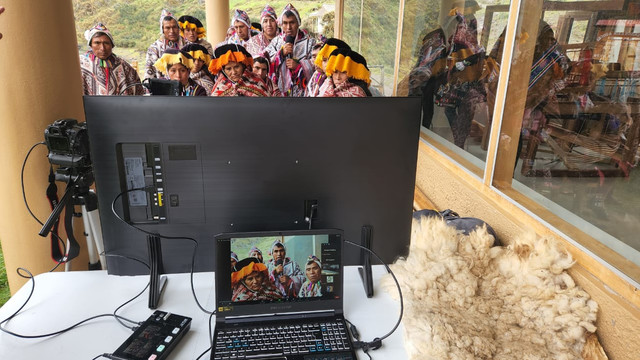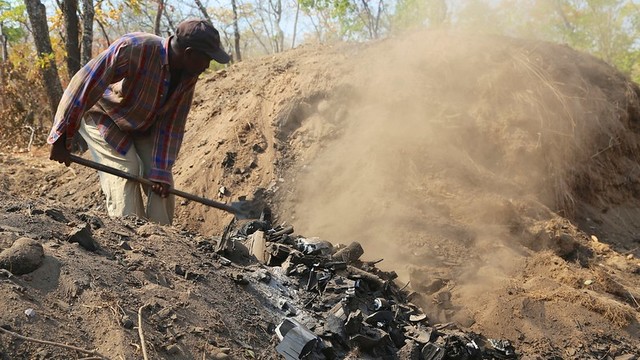New film shows Chinese mountain communities protecting biocultural heritage
A new film tells stories from inhabitants of the Stone Village in China, home to 220 Naxi ethnic families and a living example of the value of conserving biocultural heritage.
Watch the video above or on IIED's YouTube channel
A 12-minute film explores how farmers work collectively to sustain efficient water management systems, save seed varieties, including those connected to ancient cultural practices, and respond to changes in climate and market demand.
The customary water management system used in the Stone Village, located in the upper reaches of the Yangzi River in Yunnan Province, Southwest China, has lessened the impact of recurring drought compared to neighbouring villages. It also prevents conflict by ensuring water is distributed fairly amont the 12 sub-villages spread across the Stone Village mountain valley.
The film, which features both English and Chinese subtitles, was made alongside three linked South-South exchange events organised in the Stone Village in May 2016 by the Centre for Chinese Agricultural Policy, Asociación ANDES (Peru) and IIED. These were:
- A learning exchange with Quechua farmers from the Potato Park, Peru, to help establish a Naxi Biocultural Heritage Territory in the Stone Village based on the successful Potato Park model
- The third learning exchange of the International Network of Mountain Indigenous People, where Naxi and Quechua farmers were joined by other communities from China, Nepal, Kyrgyzstan and Tajikistan, and
- A policy dialogue involving these communities, policymakers from Peru and China, UN agencies and scientists.
The film shows villagers hearing how Quechua people are developing new models for conserving agrobiodiversity, and exchanging seeds to test in new environments. Xiuyun Zhang, from Stone Village, is involved in a participatory plant breeding project, and exchanges her improved maize seeds developed from the Guinuo 2006 parental line with farmers from Nepal.
Offering incentives
"Losing biodiversity undermines the resilience of agricultural systems to both climate and market changes," says Dr Yiching Song, senior research fellow at the Center for Chinese Agricultural Policy at the Chinese Academy of Science.
The film shows how biodiversity loss may come about for unexpected reasons: when young people leave the village, older villagers cannot manage work in the paddy fields, so they stop growing rice. Those farmers left want higher yields, which local varieties cannot always provide.
That's where incentives come in. Beekeeper Liu, from the Guangxi Farmers' Friend association, tells how he offers to double the purchase price of produce grown from traditional varieties.
It's enough to convince local farmers not to abandon generations of knowledge. He helps them to market the produce carefully, targeting customers in urban areas who love heritage varieties and traditional culture.
The film shows that biocultural heritage is about conserving not only biodiversity but also the link between culture, biodiversity and landscapes.
It describes how Naxi people in Stone village used to grow hemp to make linen for shrouds and big ceremonies such as the Heavenly Sacrifice ceremony. The plant became extinct and the cultural practice had to end. But in 2015 villagers found seed in another village, brought it back to grow hemp again and revived the traditional spinning technique for making linen.
As a result of these events, the local government announced its support for establishing a Biocultural Heritage Territory in the Stone Village, three neighbouring Naxi villages have visited the Stone Village to seek guidance for establishing their own biocultural heritage territory, and the biocultural territories approach is being trialled in three emerging Globally Important Agricultural Heritage Systems in China.
The film was produced by Dr Yiching Song, of the Centre for Chinese Agricultural Policy, in collaboration with IIED, the Farmers' Seed Network in China and Jumping Cat Studio. It was supported by many local groups and the Communist Government of Baoshan County. The film was made possible by funds from the Tamalpais Trust.
Contact
Krystyna Swiderska (krystyna.swiderska@iied.org), principal researcher (agriculture and biodiversity), Natural Resources research group




